What is the best polycarbonate for a canopy?
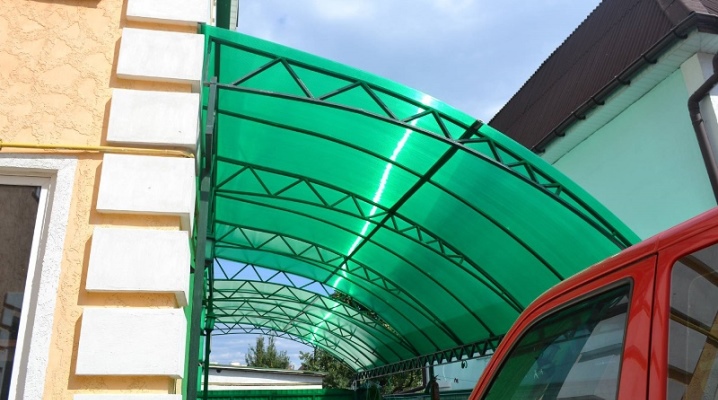
Transparent and tinted plastics are widely used for the installation of building envelopes. Modern manufacturers offer two types of slabs - cellular and monolithic. They are made from the same raw materials, but have significant differences. We will talk about how to choose the right material for a canopy in our review.
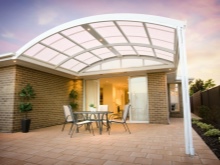

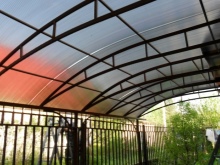
Species overview
Sheds and canopies made of polymer materials have become widespread in the arrangement of adjoining territories, retail outlets, greenhouses and car parks. They logically fit into the architectural solution of the space and are able to ennoble the appearance of even the simplest, unremarkable building. Most often, a translucent roof is installed in private houses to protect the porch, barbecue area, playground, pool or summer kitchen. It is mounted on balconies, loggias and greenhouses.
There are two types of polycarbonate - cellular (cellular), as well as monolithic. They differ in the structure of the slab. Monolithic is a solid cast mass and visually resembles glass.
The honeycomb design assumes the presence of hollow cells, which are located between separate layers of plastic.
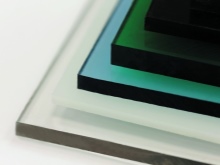
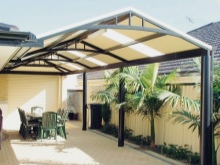
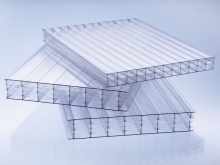
Monolithic
This type of polycarbonate is called shockproof glass in everyday life. The increased level of light transmission is combined with exceptional strength and wear resistance - according to this criterion, polycarbonate polymer is 200 times superior to traditional glass. Carbonate sheets are produced with a thickness of 1.5-15 mm. There are smooth cast panels, as well as corrugated ones with stiffening ribs.
The second option is of higher quality - it is stronger than the usual monolithic one, it bends more easily and can withstand high loads. If desired, it can be rolled into a roll, and this greatly facilitates movement and transportation. Outwardly, such material resembles a professional sheet.
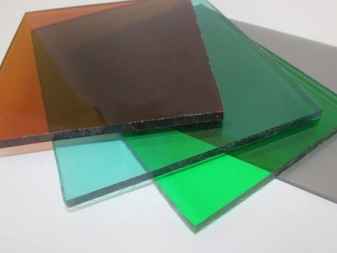

Let's note the main advantages of the monolithic polymer.
- Increased strength. The material can withstand significant mechanical as well as wind and snow loads. Such a canopy will not be damaged by a fallen tree branch and heavy snowfalls. A product with a 12 mm cut can even withstand a bullet.
- Resistant to most aggressive solutions - oils, fats, acids, as well as salt solutions.
- Molded polycarbonate can be easily cleaned with regular soap and water.
- The material is plastic, so it is often used for the construction of arched structures.
- Noise and heat insulation is much higher in comparison with ordinary glass. A panel with a thickness of 2-4 mm can attenuate up to 35 dB. It is no coincidence that it is often found in the building envelope at airports.
- Monolithic polymer is lighter than glass.
- The material can withstand a wide temperature range from -50 to +130 degrees Celsius.
- To ensure the protection of polycarbonate from ultraviolet radiation, stabilizers are added to the mass of plastic or a special film is applied.
The disadvantages include:
- rather high cost;
- low resistance to ammonia, alkalis and methyl-containing compounds;
- after external exposure, chips and scratches may remain on the polycarbonate surface.
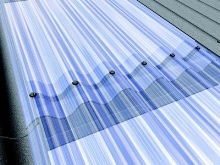
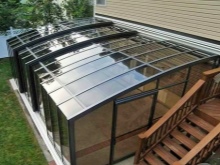
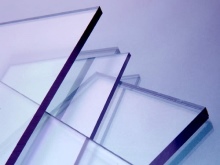
Cellular
The hollow structure affects the physical and performance characteristics of the material. Its specific gravity is much lower, and the mechanical strength of the product decreases accordingly.
Cellular panels are of several types.
- Five-layer 5X - consist of 5 layers, have straight or inclined stiffeners. The cut size is 25 mm.
- Five-layer 5W - also have 5 layers, but differ from 5X in the horizontal placement of stiffeners with the formation of rectangular honeycombs. Product thickness 16-20 mm.
- Three-layer 3X - slabs of 3 layers. The fixation is carried out by means of straight and angled stiffeners. The thickness of the sheet is 16 mm, the size of the cross-section of the stiffeners depends on the specifics of production.
- Three-layer 3H - differ from 3X polymers in rectangular honeycomb arrangement. Finished products are presented in 3 solutions: 6, 8 and 10 mm thick.
- Double layer 2H - include a couple of sheets, have square-cells, stiffeners are straight. Thickness from 4 to 10 mm.

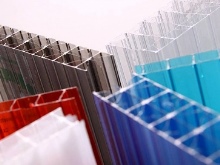
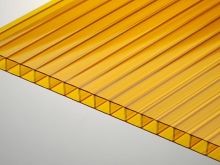
Cellular plastic is much cheaper and lighter than molded. Thanks to the air-filled hollow honeycomb, the polymer gains extra strength but remains lightweight. This allows the manufacture of lightweight structures, while significantly reducing costs. Stiffeners increase the maximum bend radius. Cellular polycarbonate with a thickness of 6-10 mm can withstand impressive loads, but unlike glass coatings, it does not break and does not crumble into sharp fragments. In addition, in stores, the product is presented in a wide variety of shades.
The disadvantages of a cellular polymer are the same as those of a monolithic panel, but the price is much lower. All the performance characteristics of sheets are known only to manufacturers.
Ordinary users are forced to make a decision on the use of this or that material, guided by the reviews of those people who used this material for the construction of visors in practice.
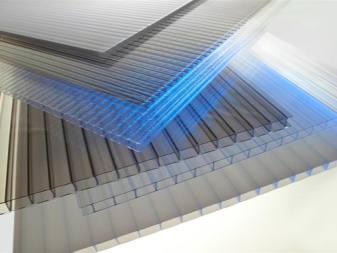

First of all, a number of features are noted.
- In terms of thermal conductivity, monolithic polycarbonate is not much different from cellular polycarbonate. This means that ice and snow will leave the canopy made of cellular polymer no worse and no better than from a structure made of monolithic plastic.
- The bending radius of a cast panel is 10-15% higher than that of a honeycomb sheet. Accordingly, it can be taken for the construction of arched canopies. At the same time, the honeycomb multilayer polymer is more adapted for the production of curved structures.
- The service life of monolithic plastic is 2.5 times longer than that of cellular plastic, which is 50 and 20 years, respectively. If you have the financial ability, it is better to pay more, but buy a coating that can be installed - and forget about it for half a century.
- Cast polycarbonate is capable of transmitting 4-5% more light than cellular polycarbonate. In practice, however, this distinction is almost imperceptible. There is no point in purchasing an expensive cast material if you can provide a high level of illumination with a cheaper honeycomb.
All of these arguments do not mean at all that monolithic models are more practical than cellular ones. In each individual case, the final decision must be made based on the structural features of the canopy and its functionality. For example, the mass of a cast polycarbonate sheet is approximately 7 kg per square, while a square meter of cellular polycarbonate weighs only 1.3 kg. For the construction of a lightweight arch with parameters of 1.5x1.5 m, it is much more practical to build a roof with a mass of 3 kg than to install a visor of 16 kg.
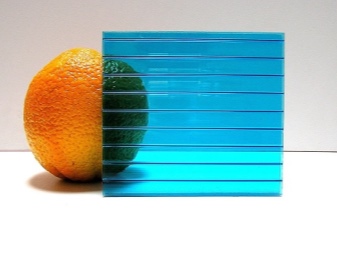
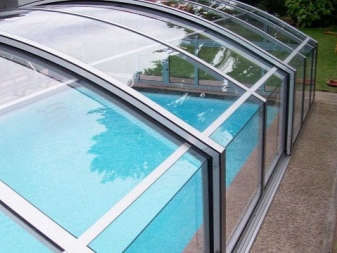
What is the best thickness?
When calculating the optimal polymer thickness for installing a roof, it is necessary to take into account the purpose of the canopy, as well as the volume of loads that it will experience during operation. If we consider a cellular polymer, then you need to adhere to several expert tips.
- 4 mm - These panels are used for small-area fences with a high radius of curvature. Usually, such sheets are bought for canopies and small greenhouses.
- 6 and 8 mm - are relevant for sheltering structures subject to high wind and snow loads. Such slabs can be used to make carports and swimming pools.
- 10 mm - optimal for the construction of sheds exposed to intense natural and mechanical stress.
The strength parameters of polycarbonate are largely influenced by the design features of internal stiffeners. Advice: it is advisable to calculate the snow load for the fence taking into account the requirements prescribed in SNiP 2.01.07-85 for each natural and climatic region of the country. As for the cast polymer, this material is much stronger than the cellular one. Therefore, products with a thickness of 6 mm are usually sufficient for the construction of parking sheds and canopies.
This is enough to provide the necessary strength and durability of the shelter in a wide variety of weather conditions.
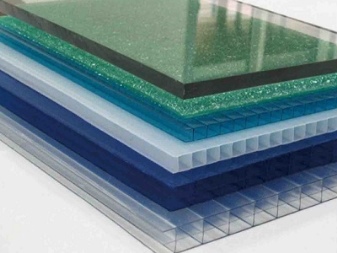
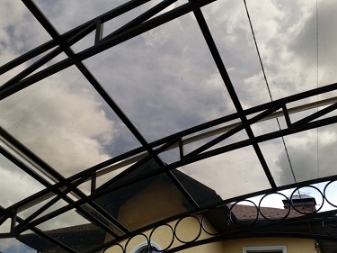
Color selection
Usually, the architectural features of buildings and the design of curtain structures are perceived by people as one ensemble. That's why when choosing a tint solution for a polymer for a roof, it is imperative to take into account the general color scheme of neighboring buildings. The most widespread are polymers of green, milk, and bronze colors - they do not distort the real colors of objects placed under the shelter. When using yellow, orange, as well as red tones, all objects under the visor will acquire a corresponding ebb. When choosing a shade of polycarbonate, it is necessary to take into account the ability of the polymer material to transmit light. For example, dark colors scatter it, it will be quite dark under cover. In addition, such polycarbonate quickly warms up, the air in the gazebo gets hot, and it becomes too hot.
For covering greenhouses and conservatories, yellow and brown panels are ideal. However, they are not suitable for protecting the pool and recreation area, since they do not transmit ultraviolet light. In this case, it will be better to give preference to blue and turquoise colors - the water acquires a pronounced sea ebb.
But the same shades are undesirable for the roof of a shopping pavilion. Blue tones distort color perception, making fruits and vegetables look unnatural, and this can scare off potential buyers.
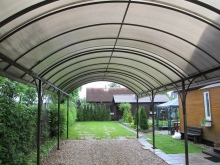
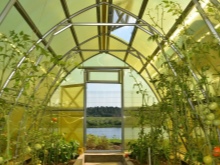
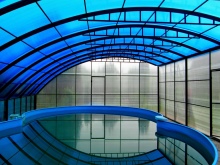
For information on which polycarbonate is better to choose for a canopy, see the next video.


























































The comment was sent successfully.